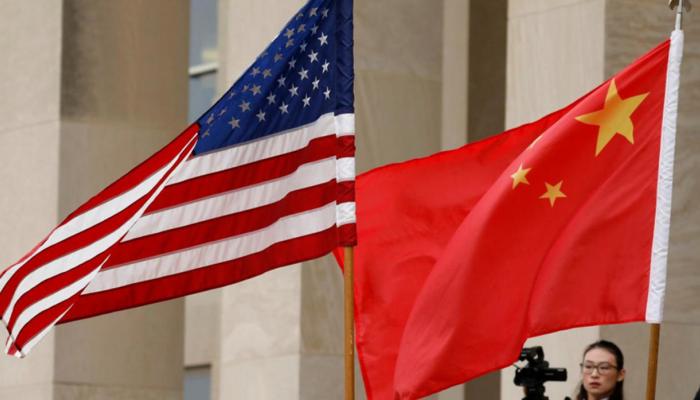Analysts have long portrayed the competition between the United States and China as a clash of two nations playing opposing roles in the global economy. Traditionally, China has been the producer while the U.S. has been the consumer. However, both countries are now striving to adopt each other’s strengths in a race to rebalance their economies. A key question raised in a Foreign Affairs analysis is whether the U.S. can compensate for lost production from China faster than China can replace lost consumption from the U.S.
In their insightful article titled “Underestimating China” in the May/June 2025 issue, Kurt Campbell and Rush Doshi argued that Washington needs to leverage alliances to achieve sufficient scale to win this competition. While assembling a U.S. team might address scale issues, it won’t be enough to surpass China’s industrial capacity and manufacturing strength. The U.S. must also undertake the hard political work of extracting raw materials, building infrastructure, and developing technology domestically. In other words, scale alone cannot create an integrated supply chain from mining and manufacturing to materials science.
According to the analysis, if the U.S. wants to become more like China, it must match not only China’s scale but also how Beijing organizes and mobilizes its productive economy, particularly in terms of speed and industrial clustering. This could be seen as an industrial policy with American characteristics. The U.S. should reduce bureaucratic procedures, such as lengthy reviews under the National Environmental Policy Act, to enable companies to build infrastructure quickly, as happens in China. For instance, in 2023, Shanghai’s municipal government and local state-owned enterprises established an AI accelerator in just 38 days.
The U.S. should also concentrate industries in specific regions to achieve efficiency and reduce costs. Here, the experience of Hefei, China, which has become a hub for electric vehicle manufacturing, could serve as a model similar to what Detroit was in the 21st century.
There is currently a rich debate about America’s renewal, focusing heavily on domestic issues. Observers agree that adopting an industrial policy is crucial for the U.S. to compete with China, but it alone is insufficient. The scale provided by alliances is equally important, offering a way to compete through market integration, technology and knowledge flow, and a means to counter China’s ability to produce low-cost goods. Domestic production without ally support is financially unsustainable, and alliances without a local production base remain ineffective.
It is also important to recognize that the domestic policies of U.S. allies impact its competitive ability. Hopefully, this message and our article will contribute to supporting a renewal agenda that integrates domestic and international factors in shaping national power.
— news from al-ain.com
— News Original —
«التقليل من شأن الصين».. هل تستطيع أمريكا هزيمة «التنين» اقتصاديا؟
قال محللون إنه لطالما صُوّر التنافس بين الولايات المتحدة والصين على أنه صراع بين بلدين يؤديان أدوارًا متعارضة في الاقتصاد العالمي. n nويتعلق ذلك بطبيعة الصين كمُنتِج، والولايات المتحدة كمستهلك. لكن الآن، يحاول كل بلد أن يصبح أشبه بالآخر في سباق لإعادة التوازن إلى اقتصاده. والسؤال الذي طرحه تحليل نشرته مجلة فورين أفيرز هو: هل يمكن للولايات المتحدة أن تعوّض الإنتاج المفقود من الصين بسرعة أكبر مما يمكن للصين أن تعوّض الاستهلاك المفقود من الولايات المتحدة؟ n nفي مقالتهما القيمة بعنوان “التقليل من شأن الصين” في عدد مايو/ أيار – يونيو/حزيران 2025، جادل كورت كامبل وراش دوشي بأن واشنطن تحتاج إلى تحقيق حجم كافٍ من خلال إنشاء شبكة من الحلفاء، من أجل الفوز بهذا السباق. وجمع فريق أمريكي قد يحل مشكلة الحجم، لكنه لن يكون كافيًا للتفوق على قدرة الصين الصناعية وقوتها في التصنيع. وعلى الولايات المتحدة أيضًا أن تقوم بالعمل الشاق سياسياً، مثل استخراج المواد الخام، وبناء البنية التحتية، وتطوير التكنولوجيا داخل حدودها. وبكلمات أخرى، فإن الحجم وحده لا يكفي لتشكيل سلسلة توريد متكاملة من التعدين والتصنيع إلى علوم المواد. n nفواتير حرب إسرائيل وإيران تتصاعد.. الصين أمام اختبار نفطي حرج n nهدنة المعادن النادرة.. منعطف حاسم في التنافس الأمريكي-الصيني n nحجم وتنظيم n nووفقا للتحليل، فإذا أرادت الولايات المتحدة أن تصبح أكثر شبهاً بالصين، فعليها أن تضاهي ليس فقط الحجم الصيني، بل أيضًا كيفية تنظيم بكين لاقتصادها الإنتاجي وتعبئته، لا سيما في مجالات السرعة والتكتل الصناعي. n nويمكن اعتبار ذلك سياسة صناعية بخصائص أمريكية. ويجب على الولايات المتحدة تقليص الإجراءات البيروقراطية، مثل المراجعات المطوّلة بموجب قانون السياسة البيئية الوطنية، لتمكين الشركات من بناء البنية التحتية بسرعة، كما يحدث في الصين. وعلى سبيل المثال، أنشأت حكومة شنغهاي البلدية وشركات الدولة المحلية مسرّعًا للذكاء الاصطناعي في غضون 38 يومًا فقط في عام 2023. n nكما ينبغي للولايات المتحدة أن تركز الصناعات في مناطق محددة لتحقيق الكفاءة وخفض التكاليف. وهنا، يمكن أن تكون تجربة مدينة خفي الصينية، التي أصبحت مركزًا لتصنيع السيارات الكهربائية، مماثلة لمدينة ديترويت في القرن الحادي والعشرين، مصدرًا للتعلّم. n nويجري حالياً نقاش ثري حول تجديد أمريكا، يركّز كثيرًا على الشؤون الداخلية. ويتفق المراقبون على أن تبني الولايات المتحدة سياسة صناعية أمر ضروري للتنافس مع الصين، لكنه وحده لا يكفي. فالحجم الناتج عن التحالفات لا يقل أهمية، إذ يوفر طريقًا للتنافس من خلال تكامل الأسواق، وتدفق التكنولوجيا والمعرفة، ووسيلة لصد قدرة الصين على إنتاج سلع منخفضة التكلفة. والإنتاج المحلي دون دعم من الحلفاء غير قابل للاستمرار ماليًا، والتحالفات دون قاعدة إنتاج محلية تظل بلا جدوى. n nويجب أيضًا إدراك أن السياسات الداخلية لحلفاء الولايات المتحدة تؤثر على قدرتها التنافسية. ونأمل أن تسهم هذه الرسالة ومقالتنا في دعم أجندة التجديد التي تدمج بين العوامل المحلية والدولية في صياغة القوة الوطنية. n naXA6IDE2LjE2LjIwNS4xNzAg n nجزيرة ام اند امز n nSE
